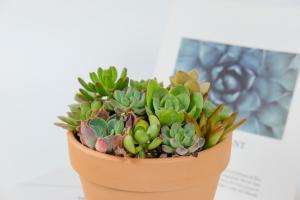How to Treat Tomato Plants with Blight
Tomato plants are a favorite for gardeners and chefs alike. However, blight is one of the most common afflictions that tomato plants face. Blight can affect both the foliage and the fruits, leading to a reduction in plant productivity and crop yields. In this article, we will discuss how to identify blight and provide tips on how to treat tomato plants with blight.
What is Blight?
Blight is a group of diseases that are caused by fungal or bacterial pathogens. The two most common types of blight that affect tomato plants are early blight and late blight. Early blight typically affects the lower leaves of the plant and can be identified by the appearance of brown spots with a yellow halo. Late blight, on the other hand, affects both the leaves and the fruits and can be identified by the appearance of water-soaked lesions on the plant's surface.
How to Treat Tomato Plants with Blight
1. Remove infected foliage: The first step in treating tomato plants with blight is to remove any infected foliage from the plant. This reduces the spread of the disease and helps to maintain plant productivity. Be sure to use clean, sharp tools when removing infected leaves and avoid touching healthy foliage with contaminated tools.
2. Practice good sanitation: Blight can survive in plant debris, so it's important to practice good sanitation in your garden. Be sure to remove any fallen leaves, fruits, or debris from the garden bed and dispose of them properly.
3. Use fungicide: Fungicides can be used to treat tomato plants with blight. The most effective fungicides are those that contain copper or chlorothalonil. Be sure to follow the label instructions carefully and only use fungicides that are labeled for use on tomatoes.
4. Use disease-resistant varieties: Some tomato varieties are more resistant to blight than others. If you live in an area where blight is a common problem, consider planting disease-resistant varieties of tomatoes.
5. Water your plants properly: Proper watering is essential in preventing and treating blight in tomato plants. Be sure to water your plants deeply and infrequently, as this promotes strong root growth and reduces the risk of blight.
Conclusion
Blight can be a frustrating problem for tomato growers, but there are ways to treat and prevent this disease. By removing infected foliage, practicing good sanitation, using fungicides, planting disease-resistant varieties, and watering your plants properly, you can keep your tomato plants healthy and productive throughout the growing season.

 how many times do yo...
how many times do yo... how many planted tre...
how many planted tre... how many pine trees ...
how many pine trees ... how many pecan trees...
how many pecan trees... how many plants comp...
how many plants comp... how many plants can ...
how many plants can ... how many plants and ...
how many plants and ... how many pepper plan...
how many pepper plan...































